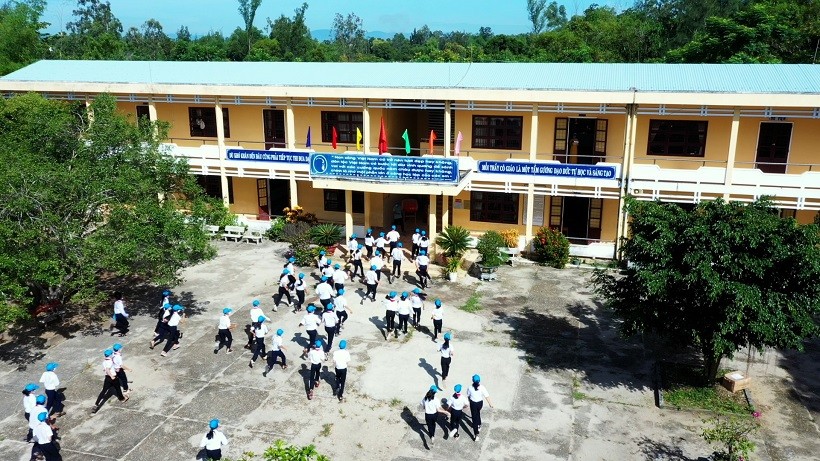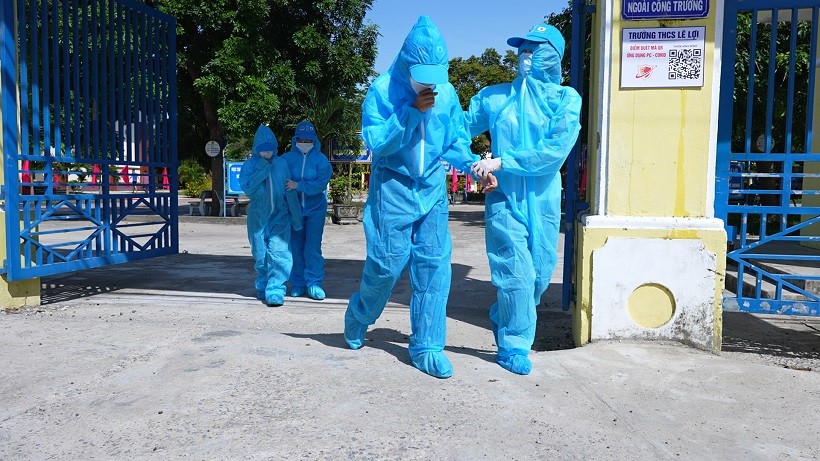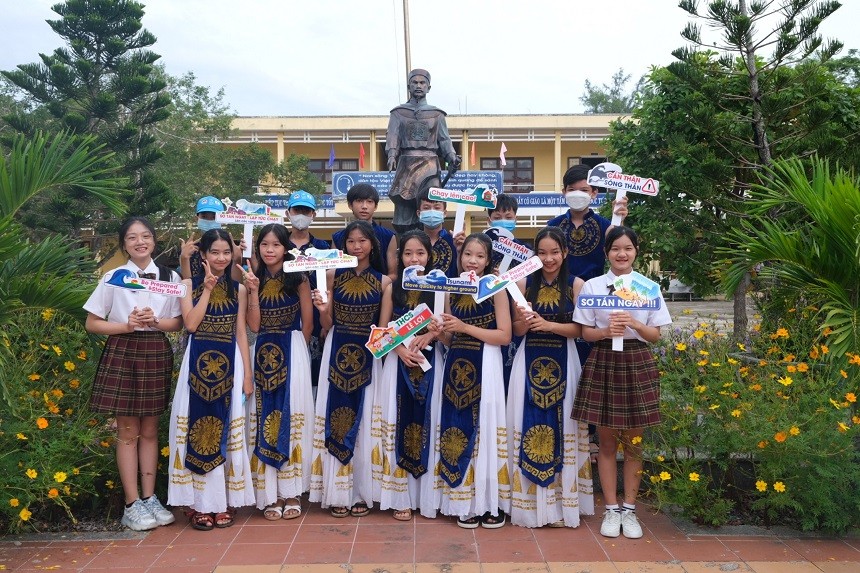
Nearly 500 students and teachers joun tsunami and multi-disaster response drills
Latest
 |
| The project titled "Response to Tsunami – Multi Natural Disasters" in Viet Nam is part of the UNDP regional project "Partnership for Strengthening School Preparedness for Tsunamis in the Asia-Pacific Region," which is funded by the Government of Japan and presently being implemented in 16 Asia-Pacific countries, including Viet Nam. (Source: Organizer) |
Representatives of the Central Steering Committee for Natural Disaster Prevention, UNDP, the Japan International Cooperation Agency (JICA), the Quang Nam Provincial Department of Training and Education, and teachers and students from other schools also participated in the drills.
According to the National Plan to Respond to Earthquakes and Tsunami and the Prime Minister's Decision No. 645/QD-TTg of 27 May 2022, the Manila Trench poses the greatest risk for earthquakes in Viet Nam.
Were a quake with a maximum magnitude of 9.3 to strike in this region, the resulting tsunami risk would affect all of Viet Nam's coastal provinces, with Thua Thien Hue, Da Nang, Quang Nam, Quang Ngai, Phu Yen, Khanh Hoa, and Binh Thuan in particular potentially subject to a level 4 disaster risk (equivalent to wave heights between 8-16 m). A tsunami would arrive at the shore within 2-4.5 hours and could reach up to 2-3 kilometers inland.
To actively respond to the risk of tsunamis, the Government of Viet Nam has focused on tsunami warning and response for coastal communities by implementing several solutions, evacuation plans, and measures at all levels of government and in schools and coastal towns.
 |
| Hypothetical situation while there is both a tsunami and a case of COVID-19. (Source: Organizer) |
“Today's tsunami and multi-disaster response drills are no exception. It is one of UNDP's efforts to strengthen local capacity to respond to tsunamis and multi-hazardous disasters in the context of a pandemic. I hope that after the drills, local authorities and schools, in addition to being fully equipped with knowledge of how to deal with tsunamis, will also have practical experience to prepare for future disasters," said Deputy General Director of the Viet Nam Disaster Management Authority and Deputy Chief of the Office of the Central Steering Committee for Natural Disaster Prevention Nguyen Van Tien.
Addressing the event, UNDP Deputy Resident Representative in Viet Nam Patrick Haverman stated "Students are the future of the community and the country, so it's really important that you have the support and protection you need to be safe. Having the knowledge and skills to know what to do in disasters may save your lives and the lives of your friends.
School and community drills have proven very effective in reducing the effects of disasters such as storms, sea level rise, floods, and tsunamis. As a result, first and foremost, it is important that schools and the coastal communities have a response plan in place that tells us who does what and when. Next, there should be regular drills to test this plan and ensure that students, teachers, and local people are all aware of what they need to do."
Takashi Suzuki, an expert from JICA, stated, "In the 2011 Tohoku earthquake and tsunami, more than 18,000 people died. However, in one city, all the elementary and secondary schools managed to evacuate to higher ground before the tsunami hit, saving their lives. The students of these schools were well trained about tsunami. When secondary school students thought a tsunami was coming, they took the initiative to shout "tsunami" to the others in the school and to run to the hill. Then they reached the designated site, but after that, they decided to go to a higher place because they had learned the importance of "doing their best." In the end, the tsunami came just in front of that spot, and they managed to save themselves."
 |
| The program was a success. The students took a commemorative photo. (Source: Organizer) |
The project titled "Response to Tsunami – Multi Natural Disasters" in Viet Nam is part of the UNDP regional project "Partnership for Strengthening School Preparedness for Tsunamis in the Asia-Pacific Region," which is funded by the Government of Japan and presently being implemented in 16 Asia-Pacific countries, including Viet Nam.
The project contributes to achieving the targets of the United Nations’ Sendai Framework for Disaster Risk Reduction to reduce lives lost, numbers of people affected, and economic damage from natural and human-induced hazards. It also aims to achieve UNDP's goal of helping vulnerable regions to adapt to climate change by integrating disaster risk measures into national strategies.

















